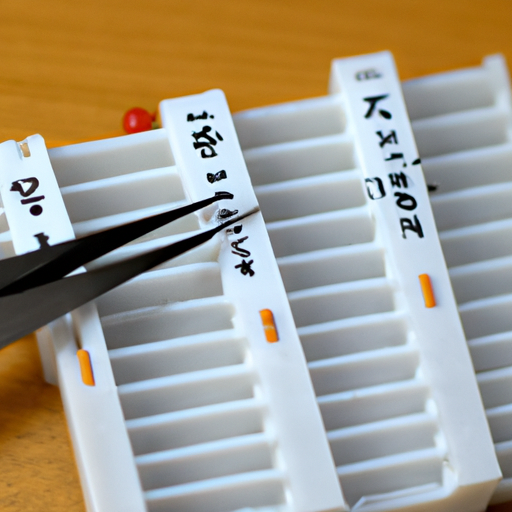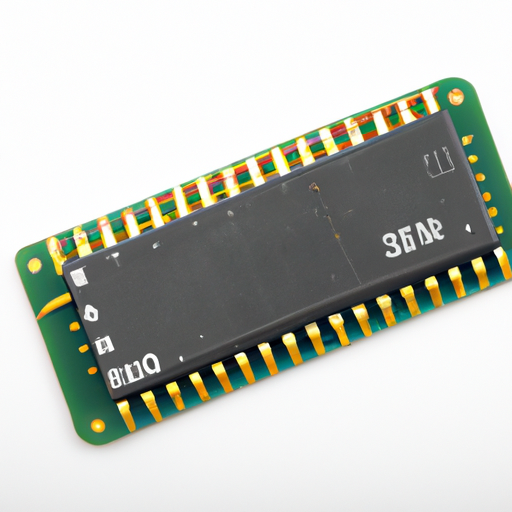How to choose spot fixed resistors?
How to Choose Spot Fixed Resistors
I. Introduction
A. Definition of Spot Fixed Resistors
Spot fixed resistors are passive electronic components that provide a specific resistance value in a circuit. Unlike variable resistors, which can be adjusted to change their resistance, spot fixed resistors have a predetermined resistance that remains constant. They are essential in controlling current flow, dividing voltages, and protecting sensitive components in various electronic applications.
B. Importance of Choosing the Right Resistor
Selecting the appropriate resistor is crucial for the reliability and performance of electronic circuits. An incorrect choice can lead to circuit failure, overheating, or even damage to other components. Therefore, understanding how to choose the right spot fixed resistor is vital for engineers, hobbyists, and anyone involved in electronics.
C. Overview of the Article
This article will guide you through the essential aspects of choosing spot fixed resistors, including their basic principles, applications, key specifications, and factors to consider during selection. By the end, you will have a comprehensive understanding of how to make informed decisions when selecting resistors for your projects.
II. Understanding Resistor Basics
1. Function in Electrical Circuits
A resistor is a component that resists the flow of electric current, converting electrical energy into heat. This property allows resistors to control voltage and current levels in circuits, making them fundamental in various applications.
2. Types of Resistors
Resistors come in various types, including fixed, variable, and specialty resistors. Fixed resistors, like spot fixed resistors, have a constant resistance value, while variable resistors (like potentiometers) can be adjusted. Specialty resistors are designed for specific applications, such as thermistors for temperature sensing.
1. Resistance Value (Ohms)
The resistance value, measured in ohms (Ω), determines how much current will flow through the resistor when a voltage is applied. It is essential to select a resistor with the correct resistance value for your circuit's requirements.
2. Power Rating (Watts)
The power rating indicates the maximum amount of power a resistor can dissipate without overheating. It is crucial to choose a resistor with a power rating that exceeds the expected power dissipation in your application.
3. Tolerance
Tolerance refers to the allowable deviation from the specified resistance value. It is expressed as a percentage and indicates how precise the resistor is. For example, a 100Ω resistor with a tolerance of ±5% can have a resistance value between 95Ω and 105Ω.
4. Temperature Coefficient
The temperature coefficient indicates how much the resistance value changes with temperature. It is expressed in parts per million per degree Celsius (ppm/°C). A low temperature coefficient is desirable for applications requiring stable resistance over varying temperatures.
III. Applications of Spot Fixed Resistors
1. Voltage Division
Spot fixed resistors are often used in voltage divider circuits to produce a specific output voltage from a higher input voltage. This is essential in applications like sensor interfacing and signal conditioning.
2. Current Limiting
In LED circuits, spot fixed resistors are used to limit the current flowing through the LED, preventing damage and ensuring proper operation.
3. Signal Conditioning
Resistors play a vital role in signal conditioning, where they help filter and shape signals for processing in amplifiers and other electronic devices.
1. Consumer Electronics
From smartphones to televisions, spot fixed resistors are ubiquitous in consumer electronics, ensuring proper functionality and performance.
2. Automotive
In automotive applications, resistors are used in various systems, including lighting, sensors, and control modules, to ensure reliable operation.
3. Telecommunications
Telecommunication devices rely on resistors for signal integrity and power management, making them essential in this industry.
4. Industrial Equipment
Industrial machinery often uses spot fixed resistors for control circuits, safety systems, and monitoring applications.
IV. Factors to Consider When Choosing Spot Fixed Resistors
1. Calculating Required Resistance
To determine the required resistance value, you can use Ohm's Law (V = IR), where V is voltage, I is current, and R is resistance. By rearranging the formula, you can calculate the necessary resistance for your application.
2. Standard E12 and E24 Series
Resistors are available in standard series, such as E12 and E24, which define specific resistance values. The E12 series includes 12 values per decade, while the E24 series includes 24 values, providing more precision.
1. Understanding Power Dissipation
Power dissipation in a resistor can be calculated using the formula P = I²R or P = V²/R. Understanding how much power your circuit will generate is crucial for selecting a resistor with an appropriate power rating.
2. Safety Margins
It is advisable to choose a resistor with a power rating at least twice the expected power dissipation to ensure reliability and prevent overheating.
1. Importance of Precision
In applications where precision is critical, such as in analog circuits, selecting resistors with lower tolerance values (e.g., ±1% or ±0.1%) is essential.
2. Choosing the Right Tolerance Level
For less critical applications, higher tolerance resistors (e.g., ±5% or ±10%) may be sufficient, allowing for cost savings.
1. Impact of Temperature on Resistance
Temperature changes can affect the resistance value, leading to performance issues in sensitive applications. Understanding the temperature coefficient helps in selecting resistors that maintain stability under varying conditions.
2. Selecting Resistors for Temperature Stability
For applications exposed to extreme temperatures, consider resistors with a low temperature coefficient to ensure consistent performance.
1. Surface Mount vs. Through-Hole
Resistors come in various package types, including surface mount (SMD) and through-hole. SMD resistors are smaller and suitable for compact designs, while through-hole resistors are easier to handle and solder.
2. Space Constraints in Design
Consider the available space in your circuit design when selecting the physical size and package type of the resistor.
V. Material Considerations
1. Advantages and Disadvantages
Carbon film resistors are cost-effective and widely used. They offer good stability and tolerance but may have higher noise levels compared to other types.
1. Advantages and Disadvantages
Metal film resistors provide excellent precision and low noise, making them ideal for high-performance applications. However, they tend to be more expensive than carbon film resistors.
1. Advantages and Disadvantages
Wirewound resistors can handle high power levels and are suitable for applications requiring high precision. However, they are bulkier and may have inductive properties that affect high-frequency applications.
1. Applications and Benefits
Specialty resistors, such as thermistors and photoresistors, are designed for specific applications, offering unique benefits like temperature sensitivity or light responsiveness.
VI. Reliability and Quality
A. Importance of Quality in Resistor Selection
Choosing high-quality resistors is essential for ensuring the reliability and longevity of your circuits. Poor-quality resistors can lead to failures and increased maintenance costs.
B. Recognizing Trusted Manufacturers
Look for resistors from reputable manufacturers known for their quality and reliability. Researching reviews and industry feedback can help identify trusted brands.
C. Certifications and Standards (e.g., RoHS, ISO)
Ensure that the resistors you choose comply with industry standards and certifications, such as RoHS (Restriction of Hazardous Substances) and ISO (International Organization for Standardization), to guarantee safety and quality.
VII. Testing and Validation
A. Methods for Testing Resistor Performance
Testing resistor performance can be done using multimeters, oscilloscopes, and specialized resistor testing equipment. These tools help verify resistance values, power ratings, and tolerance levels.
B. Importance of Validation in Circuit Design
Validating resistor performance is crucial in circuit design to ensure that components function as intended. This step helps identify potential issues before finalizing designs.
C. Tools and Equipment for Testing
Investing in quality testing equipment is essential for accurate measurements. Multimeters, LCR meters, and oscilloscopes are commonly used tools for testing resistors.
VIII. Conclusion
A. Recap of Key Points
Choosing the right spot fixed resistor involves understanding resistor basics, key specifications, and application requirements. Factors such as resistance value, power rating, tolerance, temperature coefficient, and physical size play a significant role in the selection process.
B. Final Thoughts on Choosing Spot Fixed Resistors
By considering these factors and conducting thorough research, you can make informed decisions when selecting resistors for your projects. The right choice will enhance the performance and reliability of your electronic circuits.
C. Encouragement to Research and Experiment
We encourage you to explore different resistor types and specifications, experiment with various applications, and deepen your understanding of this essential component in electronics.
IX. References
A. Suggested Reading and Resources
- "The Art of Electronics" by Paul Horowitz and Winfield Hill
- "Electronic Principles" by Albert Malvino and David Bates
B. Industry Standards and Guidelines
- International Electrotechnical Commission (IEC) standards
- American National Standards Institute (ANSI) guidelines
By following this guide, you will be well-equipped to choose the right spot fixed resistors for your electronic projects, ensuring optimal performance and reliability.







